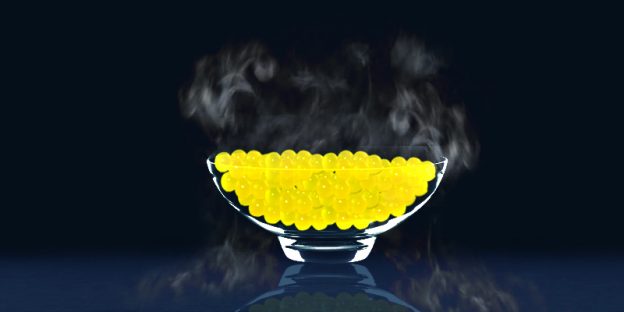Cooking is often seen as an art, but as with all things, beneath the aesthetic surface is a science that helps it come into being. In that essence, cooking is also a science. Knowing what temperatures work best for different types of food and reactions that will take place between different ingredients can all help the chef innovate every time he or she gets to work.
Molecular gastronomy is a style of cooking that celebrates the science behind the art. Cruise ship chef jobs have typically followed set recipes, with ingredients, styles, tastes and even final outlook dependent on a pre-decided menu. But that doesn’t mean there’s no chance at all to get a taste of this innovative style of cooking.
Cruise ships these days have top chefs from around the world opening their own restaurants on board where they cook as they please and chefs in these ventures play with creative dishes every day.
Royal Caribbean’s Anthem of the Seas features Wonderland, a restaurant that plays on the fantastical with ‘noodles’ that turn into soup and liquefied ‘olives’ that explode in the mouth. There’s even a ‘garden’ of baby vegetables growing in pumpernickel ‘soil’.
Britannia has a fine dining restaurant called Epicurean which features molecular gastronomy styles that uses precision cooking, freeze drying and the use of liquid nitrogen to place focus on particular aspects of texture, taste and appearance that enhance the dining experience. There are Bloody Mary lollipops with Worcestershire sauce centres, or a prawn and oyster palette with pimento sauce in a paint tube, or mango with coconut milk disguised as a poached egg.
Crystal’s Symphony and Serenity cruise ships also dabble in molecular gastronomy where equipment such as Pacojets, immersion circulators, high emulsion blenders, dehydrators, and smoke and spray guns play a big role in the kitchens. One of the top sellers on the menu is the Délice, a cylindrical white chocolate mousse sprayed with dehydrated strawberries that have been blitzed to look like red velvet powder. In the centre, is puréed passion fruit that serves as a beautiful contrast of texture alongside a coconut macaroon crumble and baumkuchen on the outside.
Surprisingly, or perhaps not, the birth of ‘molecular gastronomy’ as a term did not take place in a kitchen. A physicist, Nicholas Kurti, and a chemist, Herve This, coined it in 1988 and the principles of this type of cooking have been popularised mostly by chefs like Heston Blumenthal of The Fat Duck, Grant Achatz of Alinea, Ferran Adrià of El Bulli and others.
Understanding and studying molecular gastronomy can help with inventing new recipes. Today’s world celebrates innovation, but is also quick to criticise. Cruise ship chefs must be open in their work to learn the basics thoroughly and then use the principles of molecular gastronomy to turn classics into new culinary experiences.


